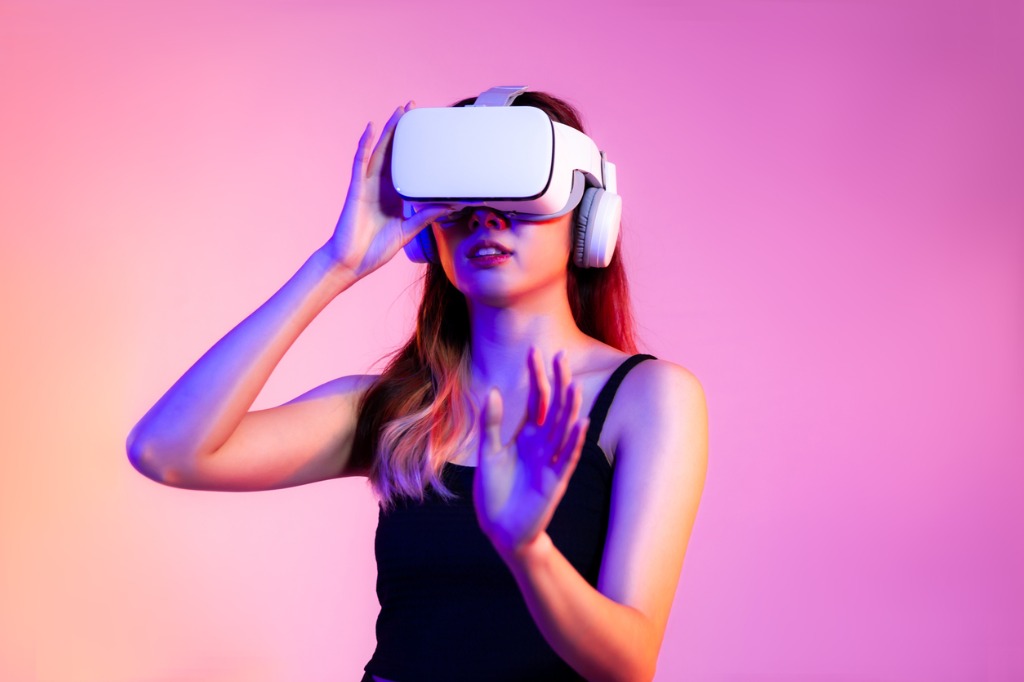Where is digital marketing going? As the metaverse grows, more and more well-known brands are using it as a digital marketing platform.
In the last year, the word “metaverse” has become more and more common, and big tech companies have put millions of dollars into making and improving this new technology. But what is the metaverse, really? And what does it mean for digital marketing in the future?
The metaverse is a digital world where real people are represented by digital characters called avatars. It is a universe that is self-contained and fully functional. It has content made by users, is always active, and happens in real time. Using both virtual reality (VR) and augmented reality (AR), the metaverse creates a network of 3D worlds that work together. You can spend your digital life in this place that is similar to the real world.
Digital Marketing in the Metaverse
When you make a virtual platform that anyone can use, you give companies and brands a huge opportunity to market their goods and services. The metaverse is still in its early stages, but brands are already using it to reach out to customers.
The four parts of the marketing mix are product, price, promotion, and place. The metaverse gives marketing teams a new place to market and new ways to promote, so it’s no surprise that they can’t wait to get started.
The metaverse lets you make your own platform and design a world around the products or services of a brand. This process takes a lot of time and research, and it also costs a lot of money. However, many brands have already found it to be worth it.
The 2022 Summit for Shopify, an online store platform, was held in the metaverse. With partnerships with Spotify and Uber Eats, users could buy things, listen to music, and get real food delivered, all from within the experience. When compared to a physical event, which is limited by location and space, the number of people who could attend a virtual convention grows by a factor of ten.
The metaverse has opened up new markets for virtual collectibles, which have been successful in the past in online games that let players buy collectible items. Sales of virtual goods directly to avatars are a $54 billion market. Nike has taken advantage of this in the metaverse by using the Roblox platform to build a metaverse space called Nikeland. Users can buy exclusive digital Nike products that their avatars can wear and show off in their own section of Nikeland. Since it started in November 2021, more than 7 million people have used Nike’s platform.
Native advertising can be moved to the metaverse. For example, billboards can be used to advertise on virtual roads, and product placement can happen on the platform itself. There are also different ways to sponsor sports and music events that happen in the metaverse.
Big companies like Coke and Samsung have already used this new platform to advertise. Coca-Cola released a limited-edition drink inside the metaverse, and Samsung made a treasure hunt on the platform that people could play to win a Galaxy S22.
Both VR and AR give brands a lot of new ways to market their products. Users can see a 3D model of a product before buying it if it is hosted in the metaverse. Hyundai has taken advantage of this feature by making a virtual Motorstudio on the platform, where people can look at different car models, watch informative videos, and buy stuff.
AR can be helpful for a wide range of brands, including those that sell home goods, furniture, and clothing. AR lets customers “place” a piece of furniture in their home before they buy it to make sure they like the style and that the size is right. This is also true for clothing brands, where customers can use AR to try on clothes before buying them.
Problems with Digital Marketing in the Metaverse
For brands that want to market in the metaverse, accessibility is a big problem. To get into the metaverse right now, you need a high-end computer with a fast internet connection and a VR headset for many of the virtual parts. Not everyone has access to these expensive pieces of technology, so not everyone will be able to jump right into the metaverse. Some consumers may be dying to get the necessary tech so they can dive into this new world, but others who are more skeptical of the metaverse won’t be rushing to spend a lot of money to get there. If your target consumer is more likely to be the latter, the metaverse may not be the best place for your brand to go right now.
Many people still don’t believe in the metaverse. Even though many tech experts have tried to explain why the idea is more than just a video game for kids, many people still don’t understand how or why it could be more than that. The metaverse is still in its early stages, and it could be years before most people see this new market for what it really is. At least for now, the many different opinions make it hard for mass marketing to work in the metaverse.
Anyone with the right technology can get into the metaverse for free, and there is no one in charge of the platform right now. This is a huge worry for brands that want to advertise in the metaverse, because you can’t control what other user-generated content shows up next to your brand, and you also risk virtual vandalism.
Concerns have been raised about the security and privacy of data as the metaverse is put into place. To fit this new environment, people are working on new ways to protect privacy and safety, but we don’t yet know how much we can trust this new technology. It’s too soon to say if the metaverse will have the same rules for security and privacy on every platform or if different countries will want their own rules, but the latter seems more likely. Depending on how this turns out, marketers could have a hard time using the metaverse to reach more people in other countries.
Another challenge of marketing in the metaverse is figuring out how to track performance, since traditional metrics can’t be directly translated because the metaverse offers new ways to market. This isn’t a deal-breaker, but marketers don’t know how to handle it yet because it’s too early. It won’t take long to learn how to do good analytics on this platform through trial and error.
Is this where Digital Marketing is going?
Investors continue to put a lot of money into the platform’s development at an incredible rate. In the first half of 2022, over $120 billion was put into the development of metaverse infrastructure and technology. Popularity is going up, and well-known brands are rushing to be the first to use the platform for advertising.
Not everyone is in favor of the metaverse, and many people are completely against it. Even though people’s opinions will probably change as the platform becomes more popular and well-known, I can’t imagine a world where everyone uses the metaverse to its fullest (except maybe 100 years from now).
The metaverse is a new kind of platform, but for the foreseeable future, it won’t replace traditional marketing methods. Some businesses won’t be able to use what the metaverse has to offer, but others will. I think we’ll hear more and more about brands moving into the metaverse, but we won’t completely replace reality with a virtual version.
There is no clear answer to the question of whether or not this is the future. I wish I could see into the future so I could see how far this could go.
At Seattle Advertising, we specialize in digital marketing, including metaverse marketing. Contact us today to discuss you marketing needs.





